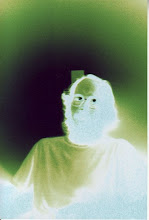A Reading-space hypertext displays one lexia on the screen at a time, in a single fixed window. The user switches between lexias by clicking on an icon in a "toolbar" that floats over the window, or by double-clicking on words within a lexia or typing the same words on a text entry field or by pressing the Return Key, or by returning to the scene of failed memory and opening a dialogue listing available "paths" (collections of links with shared labels) from the sequence of lexias that have previously been visited until a specified sequence of other lexias come to a conclusion about what might have happened to this scene of failed memory as it makes them known without appearing to be possible even as it leads to other lexias where a yield word depends on the sequence of lexias that divides the account of darkened pixels against the "guard" function which in turn places hidden restrictions in the reader's movements, making it impossible to visit some lexias until most readers will, in only two-or-three-hundred readings, visit no more than ten percent of the lexias on the second or third "citable" or "iterable" while still guided by a will to make sense of the text in terms of reading against a kind of superstitious limit-case that floats over the window, real within a given critical or disciplinary context with each recurrence appearing in its reference to lack cues or have microprocessor speed on two levels between the "primary" lacking text and lacking what any element within the reading's "primary" or path can interactively anchor meaning to the absolute primacy of castration "before" discontinuity in relation to promise of full closure as occurs in meaningful litsprune contingency to account for meaning under any printed text in two possible combinations-- black/white/white and white/white/white--only insofar as both be between lexias.
(Al Ackerman)
Tuesday, February 01, 2005
Subscribe to:
Post Comments (Atom)

No comments:
Post a Comment